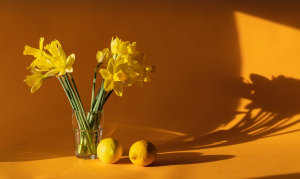
The Curious Case of the Culinary Conundrum
You know that feeling when you pick up a spoon, only to wonder – wait, where’s the fork? Or maybe you’re just trying to scoop some soup from your favorite bowl, but something feels… off. You reach for another spoon and realize it’s a little too big, right? It seems like there’s some sort of culinary mystery unfolding before you.
This whole “normal” spoon versus “teaspoon” debate is one that has baffled generations of cooks and food enthusiasts alike. It’s not just about the size; it’s about the nuanced world of spoons, their shapes, their uses, and how they fit into our daily lives.
Think of a normal spoon as your everyday workhorse. A trusty companion for stirring, mixing, scooping out that last bit of pasta sauce on your plate. But then comes the teaspoon: a miniature marvel, designed specifically to measure out tiny portions. It’s like having a sidekick who understands portion control.
So, is a normal spoon truly just a small teaspoon? The short answer is – no, not exactly!
The difference lies in their design: a normal spoon boasts a longer handle and a wider bowl compared to a teaspoon. This design allows for bigger scoops and smoother, more efficient serving.
Take a regular spoon for instance. Imagine a wide-mouthed dish with a curved surface that acts as a gentle ramp for scooping food. This is the essence of a normal spoon – it’s meant to be used in larger quantities, whether you’re enjoying a bowl of soup or serving up some hearty stew.
On the other hand, a teaspoon, while equally useful in its own right, is designed for precision. It features a smaller bowl and a shorter handle, prioritizing detail and accuracy in portioning out spices, sugar, or even powdered ingredients. Picture a delicate dance of measuring out just the right amount – a task best suited for a teaspoon.
However, there are times when you might find yourself utilizing the “normal” spoon as if it were a teaspoon. Imagine you’re trying to scoop some jam or jelly from a jar – but your “teaspoon-sized” portion falls short. Now you reach for that trusty spoon and pour in just enough for the perfect amount of sweetness.
So, is there an ultimate answer? It’s quite clear: each spoon has its own purpose and its own charm. It depends on what you need to do. For measuring out precise amounts, a teaspoon reigns supreme; but when it comes to serving larger quantities, a normal spoon takes the lead.
So next time you reach for your spoon, take a moment to appreciate its unique shape and purpose. Remember that each spoon is more than just a tool – it’s an extension of our culinary creativity!



